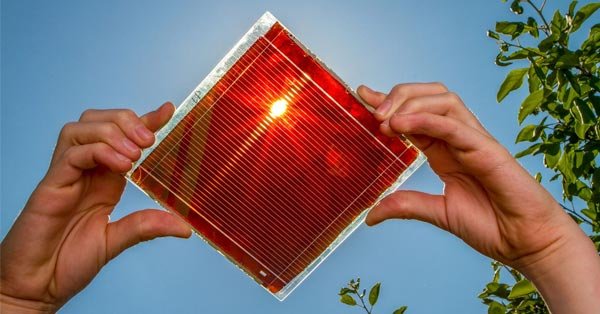Solar energy is relevant in that it can generate power using the sun and is not harmful to the Earth. Everyone is familiar with the conventional solar panels that are designed using silicon, but currently, a new form exists known as perovskite solar cells, which are changing solar power a lot. In most situations, these cells can be produced at lower costs and have improved functionality. The question is, what do perovskite solar cells do to transform solar energy in a way that is relevant?
What are Perovskite Solar Cells?
Special material, known as perovskite, is used in solar cells developed by Perovskite solar cells. This crystal material has a clear crystal structure that contributes to its great ability to absorb sunlight. Perovskite solar cells have a grown layer of this perovskite compared to the normal silicon-based solar panels. This is a thin layer that absorbs sunlight and converts it into electricity. This factor makes the layer very thin, hence requiring less material and simpler steps.
How Do Perovskite Solar Cells Work?
Whenever the sun strikes the layer of perovskite, it causes electrons to move in tiny particles. These electrons are passed through the cell, generating an electric current that we can use as power. The layers are constructed in such a manner that the electrons do not flow in both directions; hence, the electric current flows easily. Meanwhile, the cell of perovskite prevents the electrons from reverting to the original source, thus increasing the power generation.
The cells possess various components that do their own work: the perovskite layer traps water and solar radiation, an electron transport layer directs electrons, and a hole transport layer aids the positive component (titled holes) to run off. The co-working in this cell makes it very effective.
Why Are They Different From Normal Solar Panels?
When using perovskite solar cells, much thinner layers are allowed as compared to standard silicon panels. They are able to catch sunlight (even more so) with much slimmer material. Moreover, perovskite cell materials are cheaper and can be formed on a large scale easily. It is also an added advantage since these cells are effective even on cloudy days or in low light.
Scientists also found that they can put a layer of perovskite on top of a traditional silicon panel. This way, the two layers capture more sunlight colors together. This combo, called a tandem solar cell, can turn sunlight into power more efficiently than either type alone.
Benefits of Perovskite Solar Cells
High Efficiency: Perovskite solar cells have made big progress in how well they convert sunlight into electricity. Some lab tests show they can match or beat silicon panels in efficiency.
Lower Cost: Because they need fewer materials and simpler steps to produce, these solar cells could be much cheaper.
Lightweight and Flexible: Their thin and light form means they can be used in places like windows, walls, or even on curved surfaces. This opens new ways to use solar power.
Works in Different Lights: They can still generate power in low or indirect sunlight, which helps generate electricity throughout more hours of the day.
Challenges to Solve
Even though these cells are very promising, some things need fixing before they can be used everywhere. One problem is that they can break down faster than silicon panels when exposed to weather conditions like heat or moisture. Scientists are working hard to make them last longer and be more stable.
Also, some materials used in perovskite cells contain lead, which is harmful if not handled properly. Researchers are looking for ways to keep the lead safely contained or find other materials to replace it.
What Makes Perovskite Solar Cells Exciting for the Future?
These solar cells can change how we use solar energy by making panels cheaper, lighter, and more efficient. They will help bring solar power to new places and more people. For example, they could be put on windows in homes or buildings to catch sunlight without blocking views. They might also be used in portable chargers and small devices because they are so light.
Their ability to pair with silicon panels creates even stronger solar cells by capturing more of the sunlight’s colors. This means that solar panels will keep getting better at making electricity. This is good news for everyone who wants cleaner and more affordable energy.
Conclusion
Perovskite solar cells are bringing new ways to make electricity from the sun. Their special materials and design allow them to work well and stay affordable. While some challenges remain, the progress is fast and hopeful. These solar cells could become a big part of how we power our world with clean energy soon. They help us step towards a future where solar energy is available to many more places and people easily.

